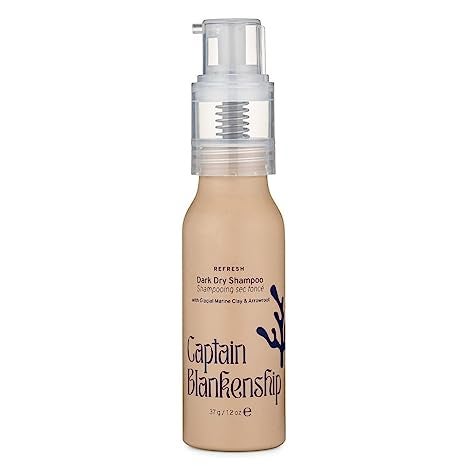

Advertising Sponsored by the Sellers of Hair La Vie Dry Shampoo
What You Need To Know Before Buying A Dry Shampoo
We may receive compensation from certain of the companies whose products are featured on this website. As a result, we receive payment when you purchase a product using the links on this website. This website is owned and operated by the same company that has ownership interest in certain products featured on this website. This compensation and our ownership interest may affect how and where products appear on the site, including the order in which they appear. This site does not include and rate all products in each category.
Go back to page
Dry shampoo can be a lifesaver when you have oily or flat hair and don’t have time for a full wash. Over-washing strips hair of its natural moisture, resulting in a higher likelihood of breakage, split ends, and sometimes even scalp irritation. So in addition to keeping hair looking and smelling fresh, using dry shampoo between washes is a great way to protect your hair and scalp in the long term.
As more and more people make dry shampoo a staple of their haircare routine, sales of dry shampoo have skyrocketed. But increasing sales have also led more brands to enter the market, each with their own unique formulas, making it difficult for consumers to keep up with the latest and greatest. To help simplify the process of choosing a dry shampoo, this guide outlines what to look for and avoid in a dry shampoo as well as the top five dry shampoos available today.
To understand how dry shampoos work, it’s important to first understand how hair becomes dirty. Hair follicles produce an oil called sebum that protects the scalp and provides hair with moisture. In addition to coming into contact with dirt and other impurities throughout the course of day-to-day life, hair builds up an overabundance of sebum over time, causing it to look oily, dirty, and flat. While the time it takes for this excess dirt and sebum to accumulate varies from person to person, for some, it’s only within a day or two of their hair being washed.
By utilizing absorbent ingredients such as talc, clay, and rice or corn-based starch, dry shampoos absorb excess sebum and impurities to make hair look and feel cleaner without using water. Some dry shampoos may also contain naturally-sourced or artificial fragrances for extra odor control, or colorants to help it better blend in with hair.
The effectiveness of a dry shampoo and its long term effects on hair will depend on the ingredients used and their quality. Evaluate any dry shampoos you are considering purchasing with the ingredients listed below in mind to ensure you can get great results no matter your hair type.
Aerosol and powdered dry shampoos both work to soak up impurities, dirt, and grease while giving lifeless hair extra body and a clean feel. However, aerosol bottles use Liquid Petroleum Gases (LPG’s) like butane, propane, and isobutane as a propellant to simplify the application process. While these LPG’s are considered “safe” for this purpose, they can be contaminated with a harmful carcinogen called benzene.
In a 2022 study, independent laboratory Valisure analyzed 34 brands of aerosol dry shampoos and found that 70 percent of the tested batches contained benzene. While not all aerosol dry shampoos will contain this dangerous contaminant, if you want to protect your body and the environment it’s best to invest in a loose powder formula and avoid the unnecessary risk altogether.
Be sure to only purchase dry shampoo from brands that include the full list of ingredients on the label. Careful examination of what’s in the product will help you avoid harsh chemicals and ingredients that may conflict with your hair type or current hair care routine. A quality brand will not be afraid to list all of its ingredients clearly on the product label.
Looking over the reviews before purchasing a product will allow you to get a clear understanding of what other customers liked and didn't like about it. Additionally, it’s worth taking a moment to evaluate reviews for strange spelling and punctuation errors, verbatim repetition of the brand’s talking points on the product, as well as reviews that look suspiciously similar to one another. These signifiers may indicate some reviews were made by bots created to influence real customers’ purchasing decisions. Approach any products with fishy-looking reviews with an extra degree of skepticism.
 Refresh Dry Shampoo Powder
Refresh Dry Shampoo Powder Shampowder Dry Shampoo
Shampowder Dry Shampoo Natural Refresh Dry Shampoo
Natural Refresh Dry Shampoo Serene Scalp Oil Control Dry Shampoo Powder
Serene Scalp Oil Control Dry Shampoo Powder*These statements have not been evaluated by the Food and Drug Administration. These products are not intended to diagnose, treat, cure, or prevent any disease.